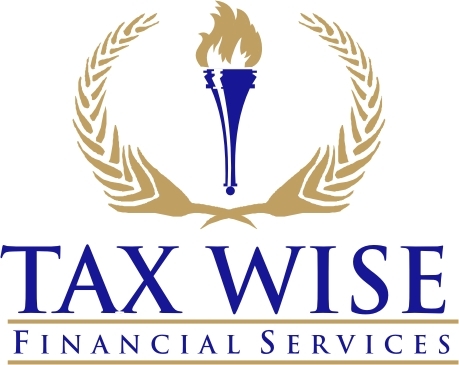
Introduction to Tax Planning for High Income Earners in 2025
Tax planning for high income earners in 2025 will be more crucial than ever before. With changes in tax laws and new financial opportunities, high earners need to be proactive in managing their tax situation. Proper tax planning is not just about saving money—it’s about making smart financial decisions that protect your wealth. In this article, we will explore what tax planning for high income earners involves, why it’s necessary, and how you can take steps to lower your tax obligations in 2025.
What is Tax Planning for High Income Earners?
Tax planning for high income earners involves organizing your financial affairs to minimize your tax burden. People with higher incomes are often subject to higher tax rates, which means they have more opportunities to lower their taxable income through careful planning. By utilizing tax-saving strategies, high income earners can reduce their overall tax liability and keep more of their money.
Tax planning for high income earners includes understanding deductions, credits, and various financial tools that can reduce taxes. It’s important to know the best strategies to minimize taxes, and to tailor them to your unique situation. Whether you’re a business owner, professional, or investor, knowing how to lower your tax burden can have a significant impact on your financial future.
Key Tax Planning Strategies for High Income Earners in 2025
1. Maximize Contributions to Tax-Advantaged Accounts
One of the best ways to reduce your taxable income is to contribute to tax-advantaged accounts, such as retirement plans and health savings accounts (HSAs). High income earners can benefit from contributing to accounts like a 401(k), traditional IRA, or SEP IRA. These contributions lower your taxable income in the current year and allow your investments to grow tax-deferred.
In 2025, contribution limits for these accounts may increase, offering more opportunities to reduce your taxes. Roth IRAs and Roth 401(k)s also offer tax-free growth, but you’ll need to watch out for income limits, as high earners may be restricted from contributing directly to these accounts.
2. Take Advantage of Itemized Deductions
For high income earners, itemizing deductions may lead to bigger tax savings compared to taking the standard deduction. Common itemized deductions include mortgage interest, property taxes, charitable donations, and medical expenses. By tracking these expenses and reporting them accurately, you can reduce your taxable income and lower your tax burden.
Keep in mind that tax laws are always changing. In 2025, some deductions may increase or change, so it’s essential to stay up-to-date. Working with a tax advisor can ensure you’re making the most of available deductions and are staying in compliance with any changes.
3. Invest in Tax-Efficient Investments
High income earners often face a higher tax rate on investment income. To minimize this, tax-efficient investments are a smart option. For example, municipal bonds generate tax-free income, which makes them an attractive choice for high earners. Additionally, focusing on investments that generate long-term capital gains can offer favorable tax rates compared to regular income.
Another effective strategy is investing in tax-deferred growth options, such as real estate or annuities. These investments allow you to delay taxes on any earnings until you withdraw the money, helping reduce your current tax burden.
4. Utilize Income Splitting Techniques
Income splitting is a strategy that involves distributing income among family members to reduce the overall tax burden for the household. If you have children or other dependents, transferring income or assets to them can help lower the total taxes your family pays, especially if your family members are in lower tax brackets.
In 2025, income splitting rules might be updated, so it’s crucial to keep up with changes in tax policies. Consulting with a tax professional can ensure that you are using this technique effectively and in compliance with tax laws.
Avoiding Common Tax Pitfalls for High Income Earners
While tax planning for high income earners can save money, it’s essential to avoid common mistakes that can lead to higher taxes or penalties. Here are some common pitfalls to avoid:
1. Failing to Plan for Capital Gains Taxes
High income earners who invest in stocks or real estate should be aware of capital gains taxes. Capital gains taxes apply to the profits made from selling assets, such as stocks or property. Depending on the length of time you hold the asset, capital gains taxes can be substantial. In 2025, tax rates on capital gains may change, so it’s important to stay informed about how your investments will be taxed when sold.
2. Overlooking the Alternative Minimum Tax (AMT)
The Alternative Minimum Tax (AMT) ensures that high income earners pay at least a minimum level of taxes, even if they have significant deductions or credits. If you are subject to AMT, certain deductions and credits may not apply, resulting in higher taxes. Tax planning for high income earners should always take AMT into account to avoid unexpected tax bills.
3. Ignoring Changes in Tax Laws
Tax laws can change from year to year, and what worked in previous years may not apply in 2025. Keeping up with tax law changes is crucial for effective tax planning. For example, there may be new tax brackets, changes in deductions, or adjustments to credits. A tax professional can help you stay up to date on these changes, ensuring that your tax planning strategies are effective.
Conclusion
Tax planning for high income earners in 2025 is essential to managing your tax obligations and keeping more of your income. By using strategies such as contributing to tax-advantaged accounts, taking advantage of itemized deductions, investing in tax-efficient investments, and utilizing income splitting techniques, you can reduce your overall tax burden. It’s also important to avoid common tax mistakes and stay informed about changes in tax laws to ensure you’re always making the best decisions for your finances.
Consulting with a tax professional will help you make the most of these strategies and navigate any changes in tax policies. With careful planning, high income earners can minimize taxes and protect their financial future in 2025 and beyond.


